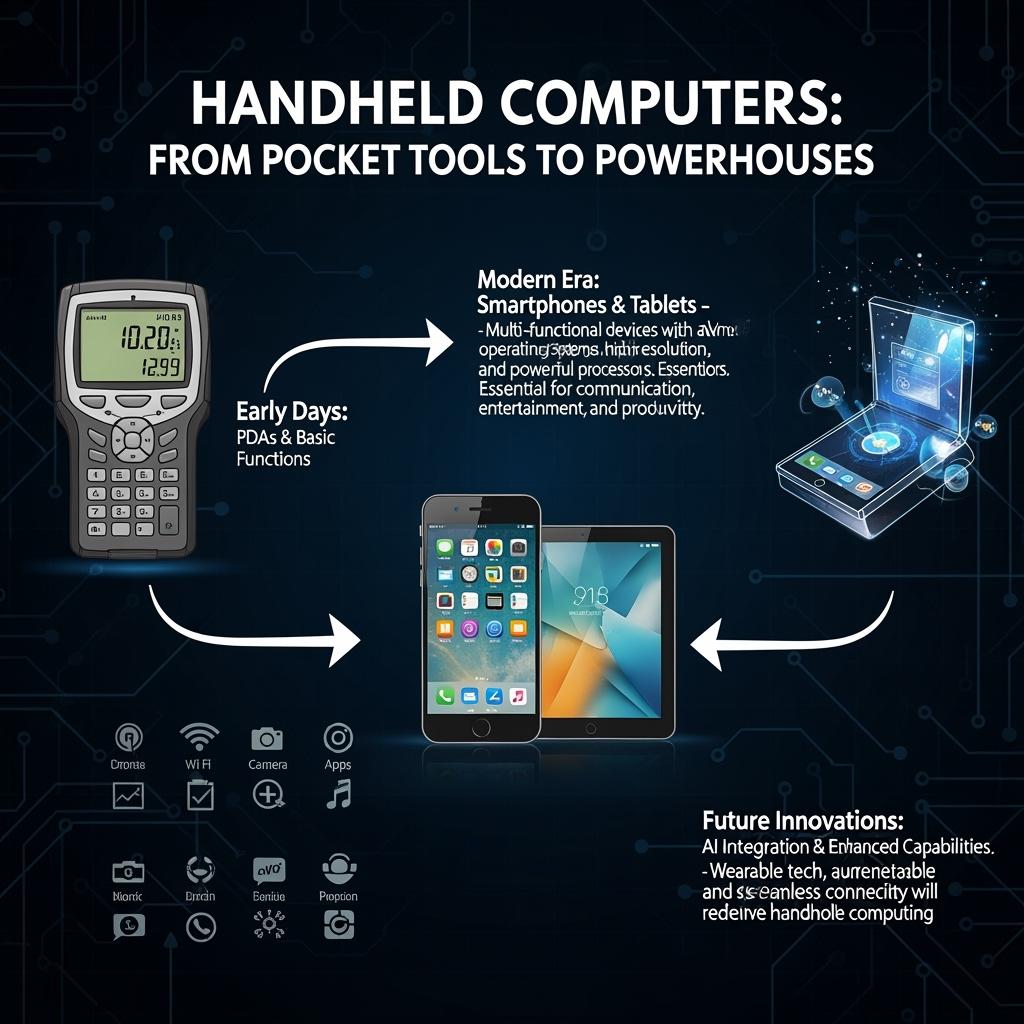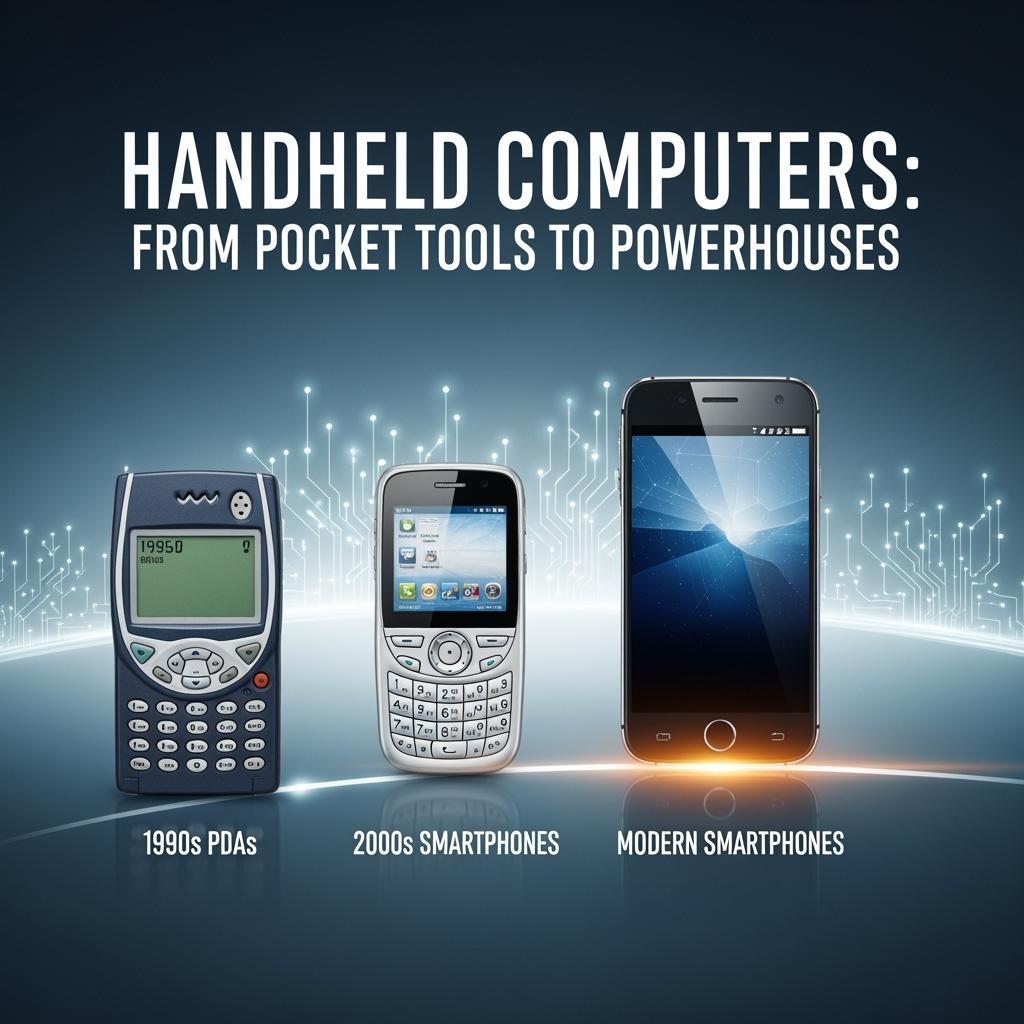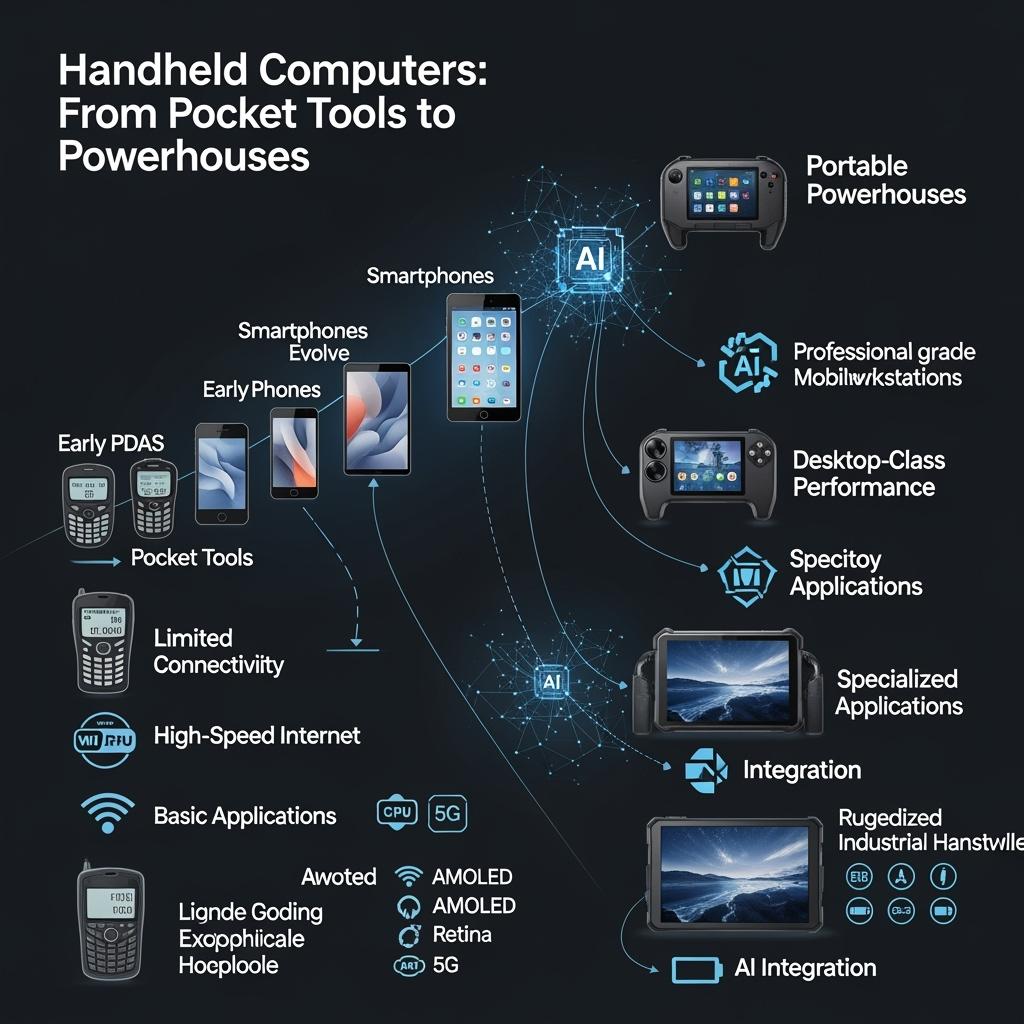Key Historical Milestones in Handheld Technology
1980s: Sharp and Hewlett-Packard introduced programmable calculators and compact computing devices.
1990s: The Palm Pilot and Psion series revolutionized the PDA (Personal Digital Assistant) market.
2000s: Smartphones began replacing dedicated palmtops with multitasking capabilities.
How Form Factors Have Changed Over Decades
Early handhelds often resembled oversized calculators or mini-laptops. Over time, they became slimmer, lighter, and integrated touchscreens, moving toward all-screen designs with minimal physical buttons.
The Rise and Fall of Dedicated PDAs
PDAs peaked in popularity in the early 2000s but declined rapidly once smartphones offered the same features alongside calling, texting, and internet access.
Modern Handheld Computer Categories
Smartphones as Pocket Computers
Modern smartphones are far more powerful than early desktops, combining processing power, high-speed connectivity, and vast app ecosystems.
Tablets and Mini-Tablets
These devices strike a balance between portability and larger displays, making them popular for reading, media consumption, and creative work.
Specialized Industrial Handhelds
Ruggedized devices used in warehouses, logistics, and field services are built for durability, barcode scanning, and specialized data entry.
Gaming-Focused Portable Devices
Handheld gaming systems like the Nintendo Switch and Steam Deck prioritize graphics performance and ergonomic design for gaming on the go.
Wearable Computing Extensions
Smartwatches and augmented reality (AR) glasses extend handheld capabilities into wearable formats for quick interactions and hands-free use.
Processor Advancements: Mobile processors now rival desktop CPUs in performance while maintaining efficiency.
Battery Innovations: Lithium-polymer batteries and fast-charging tech keep devices running longer.
Display Technologies: OLED and high-refresh-rate screens enhance visuals while conserving energy.
Connectivity: 5G, Wi-Fi 6, Bluetooth LE, and NFC expand device capabilities and integration options.
Practical Applications Across Industries
Business & Productivity: Mobile office apps, secure communication, and remote work tools enable full business operations from anywhere.
Healthcare: Patient monitoring, telemedicine, and diagnostic tools fit into pocket-sized devices.
Field Service & Logistics: Real-time inventory tracking, GPS routing, and task management tools improve efficiency.
Education: Interactive learning apps and e-book platforms empower students and educators.
Creative Professions: Photographers, designers, and videographers now use handhelds for on-the-go editing and publishing.

Handheld Computers: From Pocket Tools to Powerhouses
The Future of Handheld Computing
Emerging Form Factors: Foldable screens and modular designs may redefine portability.
AI Integration: Devices will increasingly anticipate user needs, automate tasks, and deliver personalized experiences.
Extended Reality (XR): VR and AR experiences will become more immersive and portable.
Balancing Power & Portability: The next generation will push for high performance without sacrificing battery life or comfort.

Handheld Computers: From Pocket Tools to Powerhouses
Conclusion
From humble calculator origins to AI-enhanced smartphones, handheld computers have become indispensable tools in modern life. As technology evolves, these devices will continue to shrink in size while expanding in capability, keeping the world at our fingertips.
Frequently Asked Questions (FAQs)
Q1: What is a handheld computer?
A handheld computer is a portable device small enough to fit in your hand, designed for mobile computing tasks.
Q2: How have handheld computers evolved?
They’ve grown from simple organizers to powerful devices capable of gaming, work, and internet connectivity.
Q3: What are examples of handheld computers today?
Smartphones, tablets, and gaming consoles like the Nintendo Switch are modern handheld computers.



